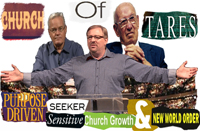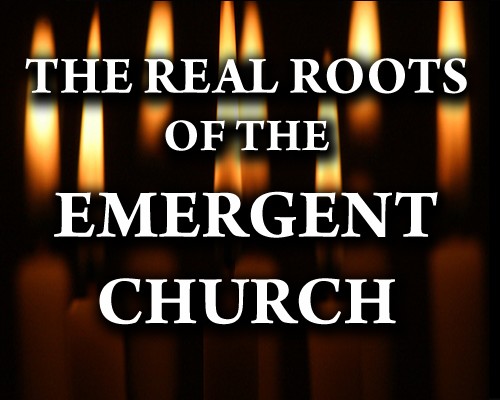 The Four Blood Moon Prophecy is a prophetic theory popularized in Four Blood Moons by John Hagee and originated with Mark Biltz, It states that a series of four consecutive total lunar eclipses, with six full moons in between, and no intervening partial lunar eclipses is a sign of significant things to come. Hagee points out that the eclipses in the tetrad coincide with the Jewish Feasts of Passover and Sukkot. Hagee and Biltz argue that the “rarity” of a tetrad is strong evidence a major change is about to happen for the nation of Israel and/or the Second Coming of Christ.
The Four Blood Moon Prophecy is a prophetic theory popularized in Four Blood Moons by John Hagee and originated with Mark Biltz, It states that a series of four consecutive total lunar eclipses, with six full moons in between, and no intervening partial lunar eclipses is a sign of significant things to come. Hagee points out that the eclipses in the tetrad coincide with the Jewish Feasts of Passover and Sukkot. Hagee and Biltz argue that the “rarity” of a tetrad is strong evidence a major change is about to happen for the nation of Israel and/or the Second Coming of Christ.
Since the first century AD, there have been 62 tetrads, eight of which have coincided with the feasts of Passover and Sukkot. Since the Jewish Calendar is lunar, their months begin with the first appearance of the crescent of the new moon. From this point, the fifteenth day of the month would coincide with a full moon every month. According to Leviticus 23, Passover is the fifteenth day of the first month and Sukkot begins on the fifteenth day of the seventh month. Thus, the Jewish feasts of Passover and Sukkot always take place twice each year on a full moon and always six months apart. So the fact that eight out of 62 tetrads coincided with both Jewish feasts is not that abnormal because lunar eclipses can only happen on full moons, one-sixth of which coincide with these two Jewish feasts.
Hagee’s book Four Blood Moons would be less suspenseful if it were called The Four Lunar Eclipses, thus illustrating that these total lunar eclipses are a naturally recurring phenomenon. Total Lunar Eclipses are regularly occurring events, hardly a unique and unusual signal to all the world as Biltz and Hagee imply. In fact there will be 85 total lunar eclipses in the twenty-first century.
April 14, 2015 is the first of four consecutive total lunar eclipses in 2014 and 2015 a series known as a tetrad. A tetrad is when a group of four consecutive lunar eclipses are all total eclipses, occurring at approximately six month intervals. The total eclipse of April 15, 2014, will be followed by another on Oct. 8, 2014, and another on April 4, 2015, and another on Sept. 28 2015.
Once again, these total lunar eclipses are normal. These are not rare events. Additionally, these eclipses are not visible from all parts of the earth. Would not God demonstrate an unordinary and universal sign to all if He were communicating to the world?
Before we properly exegete the Scriptures cited by Hagee and Biltz to build their cases, let’s consider the other tetrads of 1492, 1948 and 1967, which they say correspond to the most important dates in all of the history of the nation of Israel:
- The expulsion of Jews from Spain took place in 1492.
- Israel’s War of Independence War took place in 1948.
- The Six-Day War took place in 1967. (source)
Biltz and Hagee don’t go to the Bible to prove their case about the specific signs of lunar and solar eclipses but they consult the Jewish Talmud. Resorting to the Jewish Talmud demonstrates how unbiblical the Blood Moon Prophecy really is. One article citing Biltz’s work states:
The reason for this can be traced to the Jewish Talmud, an important Jewish text used to define religious Jewish law and Moses’ five books known as the Torah. Tractate Sukkah 29a indicates that if the moon is in eclipse, it is a sign of wrath that will come upon Israel while solar eclipse of the sun is a bad omen for the world. In the case of a blood moon eclipse, the Talmud adds that: “If its face is as red as blood, (it is a sign that) the sword is coming to the world.” In summary, Lunar Eclipse = bad omen for the Jewish people and Israel; Blood Moon = sword coming; Solar Eclipse = bad omen for the world. (source)
While the lunar eclipse is described in the Talmud as negative signs for Israel, Hagee and Biltz link them to the 1948 independence of Israel and the Six-Day War of 1967, which are celebrated historic events in Israel’s history, not bad omens. Why are some of the tetrads denoting good events for Israel like the victory of the Six-Day War, while others bad events like the Spanish Inquisition?
Another problem is that the 1493–94 tetrad occurred after the 1492 expulsion of the Jews from Spain and discovery of the New World. Why would God send the sign after the event actually occurred?
Likewise, the 1949–1950 tetrad occurred after the re-establishment of the state of Israel in 1948. In no way do these tetrads serve as signs then as Hagee and Biltz are treating them today.
In addition to these three significant historical events for the nation of Israel, Biltz found other tetrad events which also coincided with the Jewish feast days, but there was no known historical significance attached to them.
Thus, the Four Blood Moon prophecy is very problematic and inconsistent.









 Conceived in Rape & Other Exceptions
Conceived in Rape & Other Exceptions  Zeitgeist Refuted Final Cut
Zeitgeist Refuted Final Cut  Real Roots of the Emergent Church
Real Roots of the Emergent Church  Church of Tares
Church of Tares